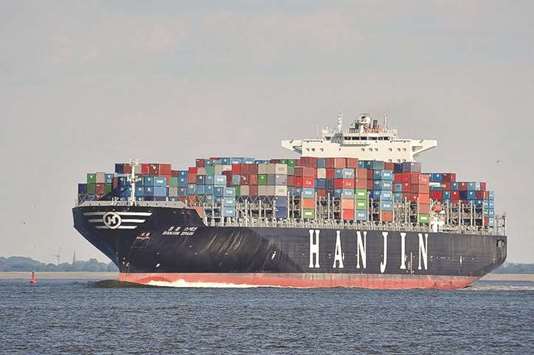The global economy’s uncertain future

At the start of 2018, most of the world economy was experiencing a synchronised cyclical recovery that seemed to herald a longer period of sustainable growth and an end to the decade-long hangover from the 2008 slump. Despite the shock of Brexit, storm clouds over the Middle East and Korean Peninsula, and US President Donald Trump’s unpredictable behaviour, rising investment and wages, alongside falling rates of unemployment, appeared to be in the offing.
Yet, as I warned in January, “the global mood [had] shifted from fear about political risks to obliviousness, even though many such risks still loom large.” Moreover, while my preferred global indicators were all looking up, I worried about whether that would continue after the first half of 2018, given foreseeable complications such as monetary-policy tightening across advanced economies, especially in the US.
Lo and behold, we are now halfway through 2018, and some of those same indicators are no longer looking quite so rosy. While the US Institute for Supply Management’s June Purchasing Managers’ Index (PMI) remains very strong, other comparable surveys around the world are not nearly as robust as they were six months ago. Most important, business activity has slowed in both China and Europe.
Another key indicator is South Korea’s trade data, which is published monthly and before that of any other country. On July 1, we learned that South Korean exports had fallen year-on-year in June 2018. Whereas 2017 was a record-setting year for the country’s nominal export strength, 2018 has ushered in several months of decelerating performance. Ironically, this slump coincides with improved relations with North Korea, while the strong performance last year occurred in spite of nuclear brinkmanship on the Korean Peninsula.
The weakening of South Korean exports calls for careful follow-up analysis, both of other major economies’ trade data and of South Korea’s July data, when it is published on August 1. Given the worrying escalation of Trump’s import tariffs and the retaliatory measures being pursued by China, the European Union, and others, one should not be surprised if the weakening of global trade persists.
That said, one also should not assume that falling trade numbers are a direct result of tariffs. We do not yet have a full regional breakdown of export performance. But from the data that are available for the first 20 days of June, we can see that South Korean exports to the US and China were actually rather strong; the weakness was in exports to Association of Southeast Asian Nations countries and the Middle East. If this remains the case, there is less reason to worry that the strong global-trade performance over the past 12-18 months is being thrown into reverse.
After all, we are in a decade in which the world economy is dominated by activity in the US and China. According to my calculations, 85% of the growth of nominal GDP worldwide since 2010 is due to these two countries, with the US accounting for 35% and China accounting for 50%. So, as long as China and the US are doing fine, the global economy can be expected to sustain annual output growth of around 3.4%.
As for the rest of the world, economic indicators from this time last year through early 2018 seemed to suggest that many previously weak performers were finally on the mend. In nominal dollar terms, Brazil, the EU, Japan, and Russia all experienced slight declines since 2010, but showed signs of improvement in 2017.
For example, at this time last year, the EU looked as though it was on the cusp of a robust, widespread cyclical recovery. But that no longer seems to be the case. Key economies such as France and Germany have experienced a slowdown, perhaps owing to fears of a global trade war. And, of course, the plodding Brexit negotiations, Italy’s new anti-establishment government, and an intra-EU political crisis over immigration have all created more economic uncertainty. The immigration crisis, in particular, could have severe consequences both for German Chancellor Angela Merkel’s government and for EU cohesion.
To be sure, Europe’s economic softening could prove temporary, and PMIs for eurozone countries did strengthen somewhat in June, following a couple of months of marked decline. But it would be foolhardy to rule out the worst.
Still, as we have seen, the sustainability of global growth depends largely on the US and China. Obviously, if these two economic giants are going to start trading blows with tit-for-tat tariffs, both will lose – and so will the world economy. For the US, where consumption accounts for around 70% of GDP, positive international trade and a stable, friendly investment climate are essential for sustainable growth. One hopes that someone close to Trump can turn him around before his policies derail the world’s long-awaited recovery. – Project Syndicate